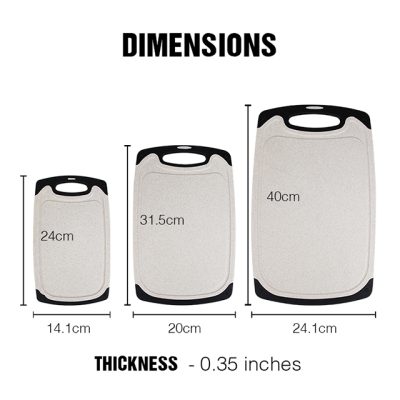How to buy an eco-friendly cutting board
Plastic cutting boards are generally divided into two types, one is PE material and the other is PP material. The PE material cutting board can present a variety of colors, and the thick cutting board is made of layers, and the price is relatively cheap. The density of PP material is higher than that of PE, and it is integrally formed. The color is only white, and the price is more expensive than that of PE material.
Regular plastic cutting boards are processed with food-grade plastic resin. Its characteristics are odorless and non-toxic, and its chemical properties are relatively stable, so qualified plastic cutting boards that meet national standards are safe and non-toxic. However, some merchants add auxiliaries or harmful additives containing heavy metals such as lead and cadmium for product performance or good looks, and even some unscrupulous merchants use recycled materials in order to reduce production costs, which may lead to chemical substances during use. Therefore, when purchasing a plastic cutting board, it is recommended to check whether the label of the product indicates whether the material is food-grade PP or PE.
When buying, pay attention to the following:
1. The color of the product should be translucent and evenly distributed;
2. The product has no impurities and irritating odor;
3. Touch the product to see if there is powder on your hands (the powder will appear when talc and calcium carbonate are added beyond the standard).







